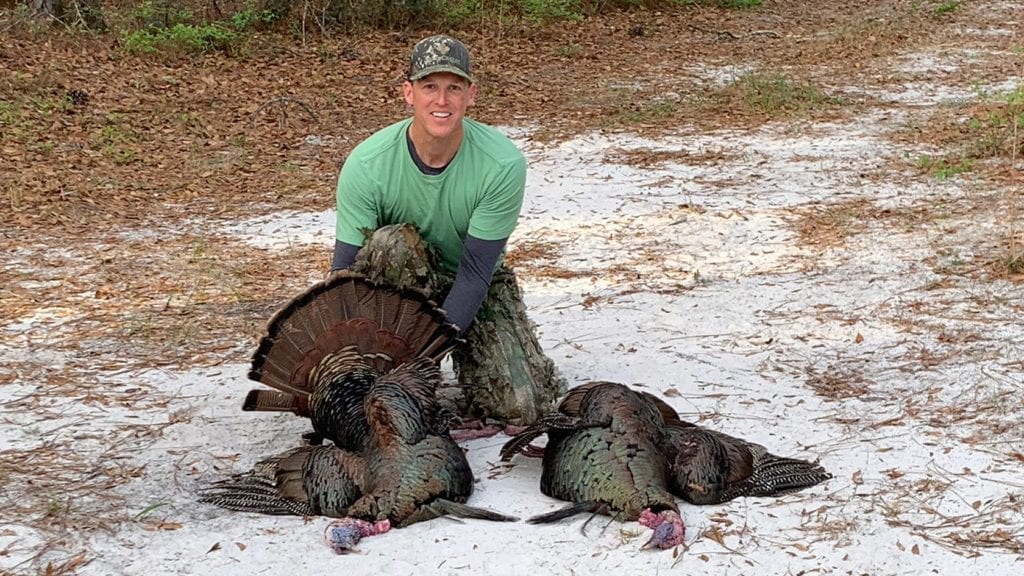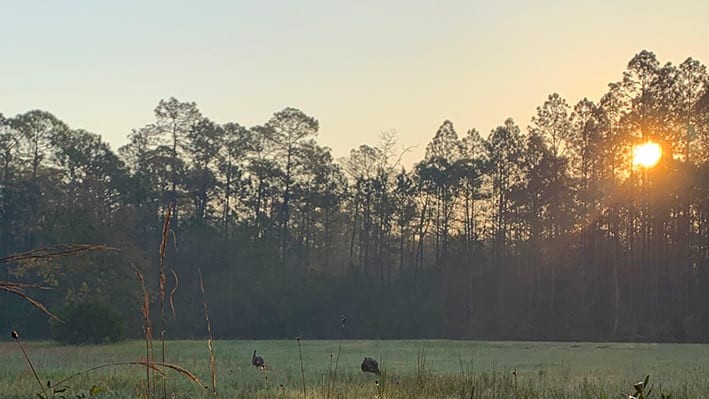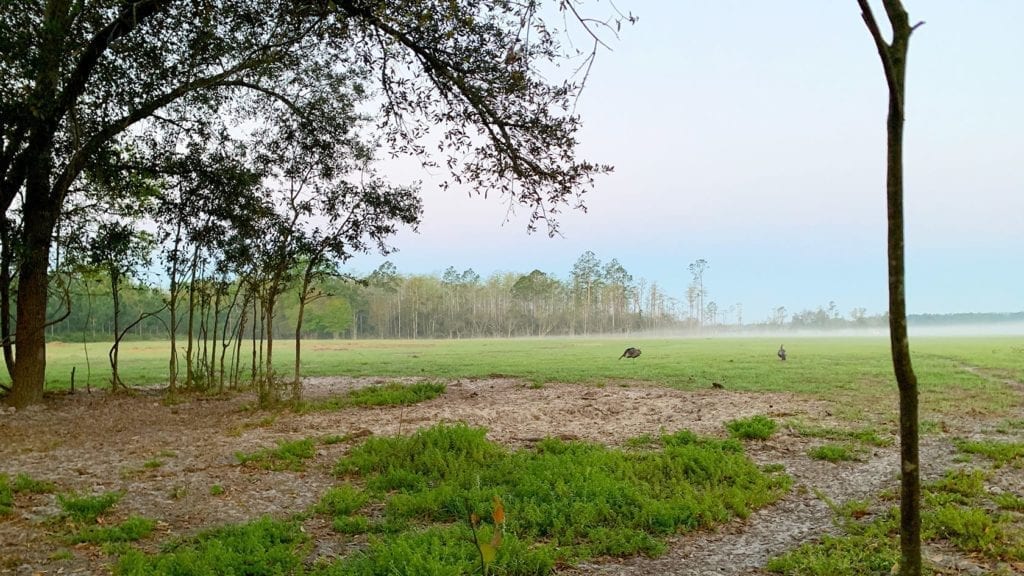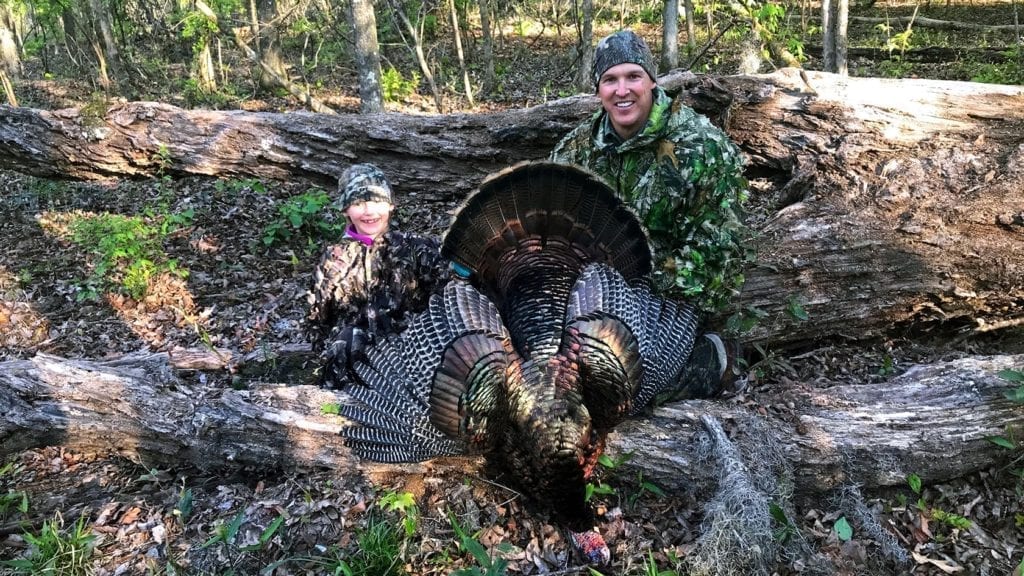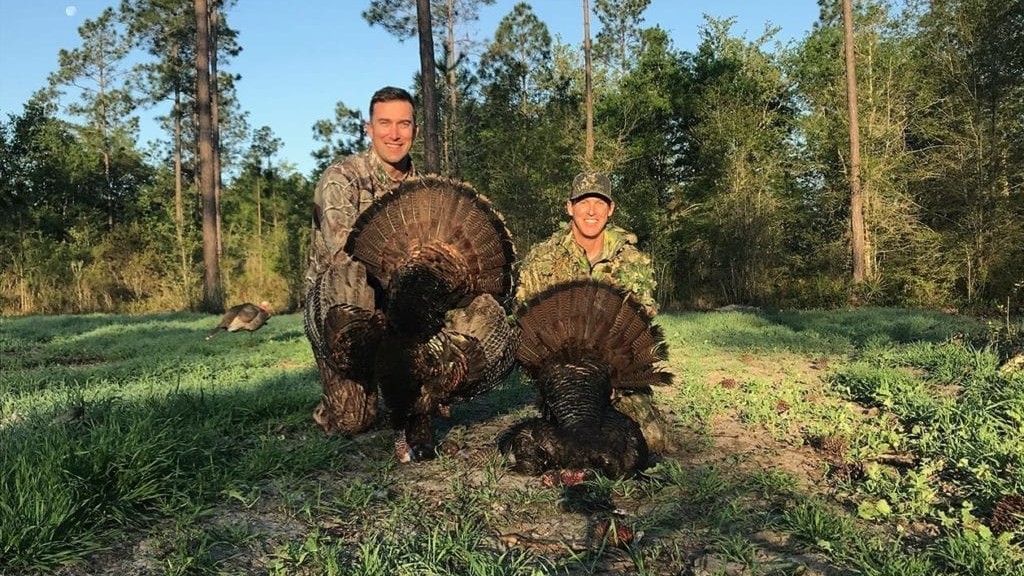With the passing of the State of the Union address, we assess the “State of the Wild Turkey” in anticipation of turkey season starting in my home Sunshine State of Florida on March 7, 2020. Coincidentally, one of the newest states for Live Water Southern, South Carolina, is where a significant discovery and set of events would unfold that would make turkey hunting in Florida and the spring anticipation of turkey hunters across the United States possible.
In the late 1950s, the “State of the Wild Turkey” was almost extinct. Populations were in severe distress in most states from overhunting and habitat loss. Wild turkeys had disappeared from 18 of 39 original states by 1920. The population had decreased from a peak of 10 million birds to 200,000 to 300,000 birds by 1930 to1940. *
“The Greatest Conservation Success Story”
However, in 1951, on the 6,880-acre Waterhorn Unit of the Francis Marion National Forest near Charleston, South Carolina, Herman (Duff) Holbrook (a turkey hunter and a wildlife biologist with the United States Forest Service) became the first person to catch wild turkeys successfully using a cannon-fired net, originally designed to capture waterfowl. By 1957, Holbrook had used the canon net to capture 241 eastern wild turkeys. These birds were released in eight major locations in South Carolina. This remarkable technique for capturing wild turkeys and relocating them across their historic range set in motion what is widely regarded as the greatest conservation success story in the history of the United States.
Rob Keck, a friend, and turkey hunting enthusiast began his career with the National Wild Turkey Federation (NWTF) in February of 1978. He currently says, “The return of the wild turkey in North America is nothing short of amazing…and that can be said for the restoration efforts here in South Carolina. The SC Wildlife and Marine Resources Department as it was known back in the ’70s made an all-out effort of trapping and transferring birds throughout the state from the original and last remnant flocks found in the Francis Marion National Forest. The NWTF and its state and local chapters played a supporting role in providing rocket nets, transport boxes, manpower and money to support those efforts.”
With the support of groups like the NWTF working with state and federal wildlife agencies, the wild turkey today has returned to all of its historic range and has exceeded that range to be found in huntable populations in 49 of the 50 states with a population of just over 6 million birds. For this, turkey hunters in Florida and across this great country are eternally grateful. Without it, we would likely not be hunting turkeys at all this spring.
The “State of the Wild Turkey” Today
Today, following a tremendous expansion of both wild turkey populations and turkey hunting participation in the United States (there are approximately 2.5 million turkey hunters today), we can make these important observations:
1. Turkey habitat is in really good shape.
Turkeys benefit from being highly adaptable in the types of habitat they occupy. Consolidation of family farms into more intensive and expansive commercial operations has hurt some, but overall turkeys have what they need to maintain a high population in the Southeast. They benefit from the many different land uses in existence today. In addition to being highly flexible, the growing interest in hunting wild turkeys has promoted the interest of managing land for wild turkeys. Across the Southeast, Farms and Plantations are paying special attention to how to establish and grow populations of wild turkeys on their land.
In fact, Jay Walea, land manager at Palmetto Bluff and adjoining WalCam Holdings, describes them as an “umbrella species”, meaning that when a manager manages land for the benefit of wild turkeys most all other species benefit and grow. These two factors have led to excellent turkey habitat across all three Southern states – Georgia, Florida and South Carolina – where Live Water Southern currently sells and manages land and a healthy population of wild turkeys in 49 of 50 states.
2. Is the recent downturn in population an anomaly or trend?
Turkey habitat appears to be well established and improving, but our turkey population has had an overall downward trend over the last ten years in the Southeast. Why is this? Walea and a group of researchers in South Carolina have generated ideas. Hunting pressure and the way we hunt turkeys is getting a careful look with new insights on turkey breeding behavior shedding light on a previously held belief. It was long thought that when a hunter harvested a mature dominant gobbler other sub-dominant gobblers would step in to breed available hens thus ensuring adequate breeding for the following year. However, our population is experiencing this downward trend, which coincides with the increased popularity of turkey hunting. This led Walea and his group to take a closer look at this long-held belief that other “toms” will step in and fill a dominant “tom’s” shoes. They found that all of the hens are not being bred when a mature gobbler is removed early in the season and that sub-dominant gobblers do not begin breeding until the following year after a dominant gobbler is removed. They may gobble and strut but rarely breed.
This led South Carolina to change the season structure in the hopes of reducing harvest of mature birds before they have had the chance to do any or significant breeding with the hopes of having more hens being bred and a better hatch for the upcoming year. Jay took the experimental step of not hunting for a year at Palmetto Bluff and saw excellent recruitment (a hen’s success in nesting and hatching poults) after two down years in a row where they hunted as normal. This is a bold management step, but one practical step as a result of this new research is to identify the mature “tom” or “toms” in the areas one hunts and to try to delay harvesting these mature birds until later in the hunting season, if possible, to ensure the breeding of more hens. Turkeys are not near as easily aged as say Whitetail bucks, but it is fairly evident when a bird is observed strutting with five to ten hens while other gobblers remain off to the side in a field or completely out of sight that this would be the mature gobbler. Astute hunters and managers could easily avoid this area while hunting others until later in the season. Once these dominant birds have bred most of the hens they respond better to calls and are more enjoyable to hunt and much less frustrating!
The recent development of using motion decoys and fans to attract these gobblers that would have been previously “un-callable” to within gun range has further increased the hunting pressure on these mature “toms.” These “toms” are mature and wily to hunt for a reason, having survived many hunting seasons, but are still susceptible to these decoys that rely on his desire to protect his home turf from other gobblers. This type of hunting pressure specifically targets the most mature gobblers and should be managed carefully.
The following article does an excellent job of summarizing the potential factors that could be contributing to the recent downward trend in population:
https://www.fieldandstream.com/special-report-why-are-wild-turkey-numbers-declining-in-eastern-us/
Managing Land and Plantations for Wild Turkey Populations
Certainly, any of the numerous activities we undertake as managers to increase nesting success and create better habitat can play an important role in next year’s population, but breeding success has to be at the top of the list. We have often concentrated on post-breeding efforts like habitat quality and diversity as well as predator control, which are all important. Managing our hunting pressure on breeding gobblers has likely been overlooked or based on errors in understanding and needs more prominent attention. Land managers will be prudent to manage all factors that influence turkey nesting success on their properties going forward to ensure the continued success of the wild turkey population and the very best hunting.
*Statistics and excerpts taken from the following history of the restocking of the wild turkey in the United States: https://www.nwtf.org/_resources/dyn/files/75706989za3010574/_fn/Wild+Turkey+Population+History+and+Overview.pdf?Compare


